Abstract
In Experiment 1, food-deprived pigeons received delayed symbolic matching to sample training in a darkened Skinner box. Trials began with the illumination of the grain feeder lamp (no food sample), or illumination of this lamp, accompanied by the raising of the feeder tray (food sample). After a delay of a few seconds, the two side response keys were illuminated, one with red and one with green light, with positions counterbalanced over trials. Pecking the red (green) comparison produced grain reinforcement if the trial had started with food (no food); pecking red after a no-food sample or green after a food sample was not reinforced. Once matching performance was stable, four stimuli were presented during the delay interval, and their effects on matching accuracy were evaluated. Both illumination of the houselight and the center key with white geometric forms decreased matching accuracy, whereas presentation of a tone and vibration of the test chamber did not. In Experiment 2, pecking the red center key was reinforced with food according to a variable interval schedule. The effects of occasional brief presentations of the four stimuli used in the first experiment on ongoing pecking were assessed. The houselight and form disturbed key pecking, but the tone and vibration did not. Thus, stimuli that interfered with delayed matching also interfered with simple operant behavior. Implications of these results for theories of remembering are discussed.
Keywords: delayed symbolic matching to sample, delay-interval stimulation, interference, remembering, stimulus control, key peck, pigeons
Full text
PDF
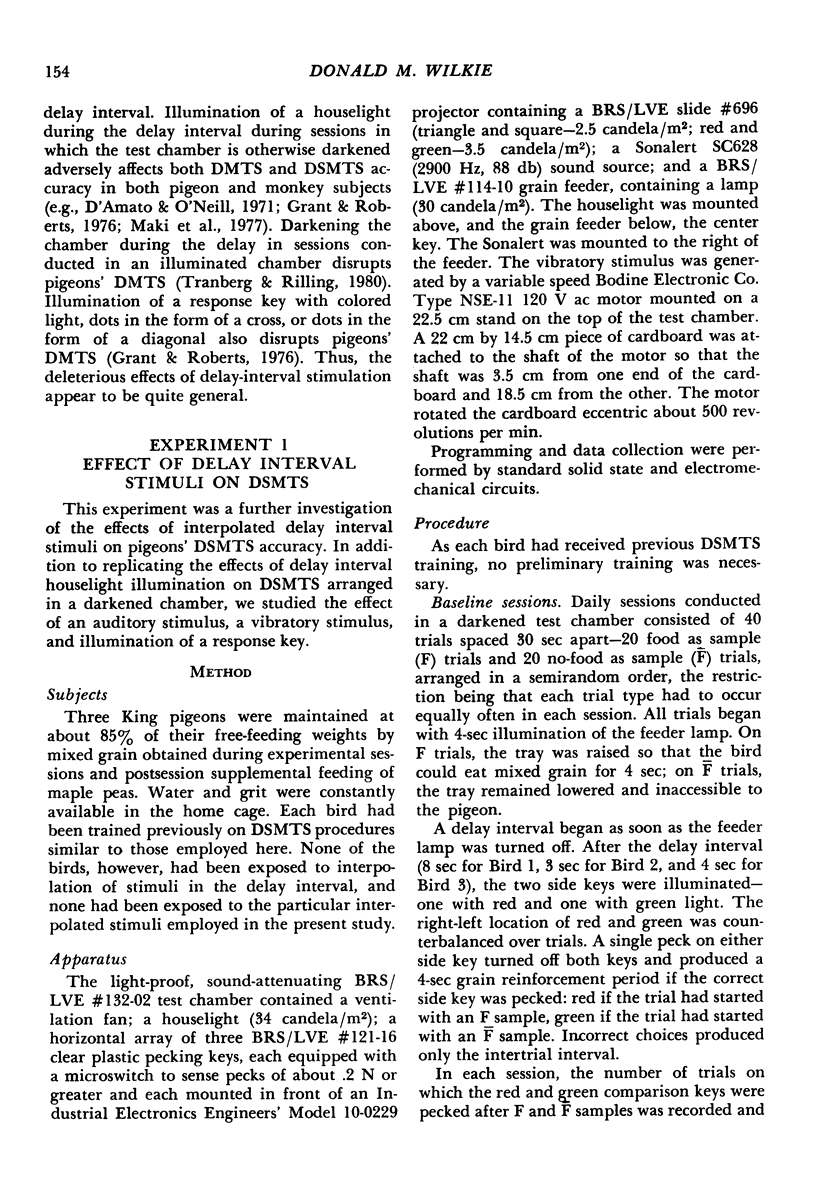
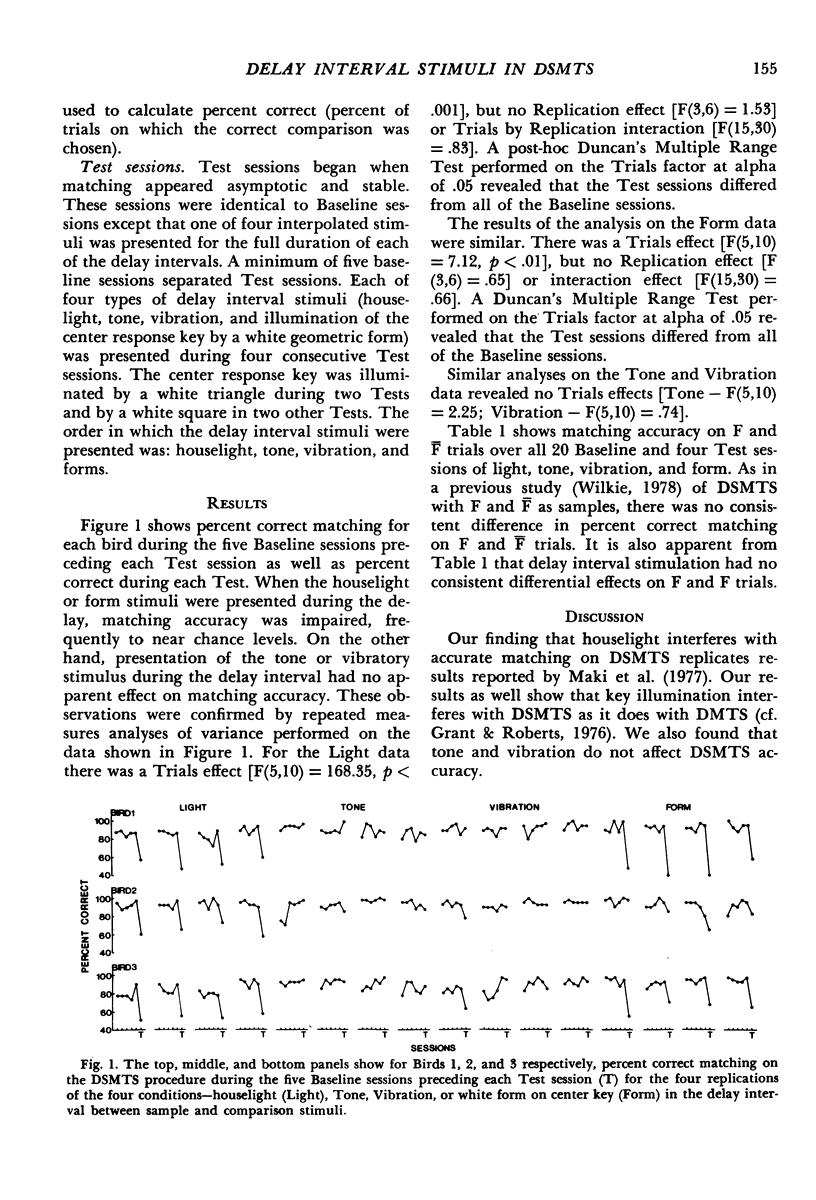
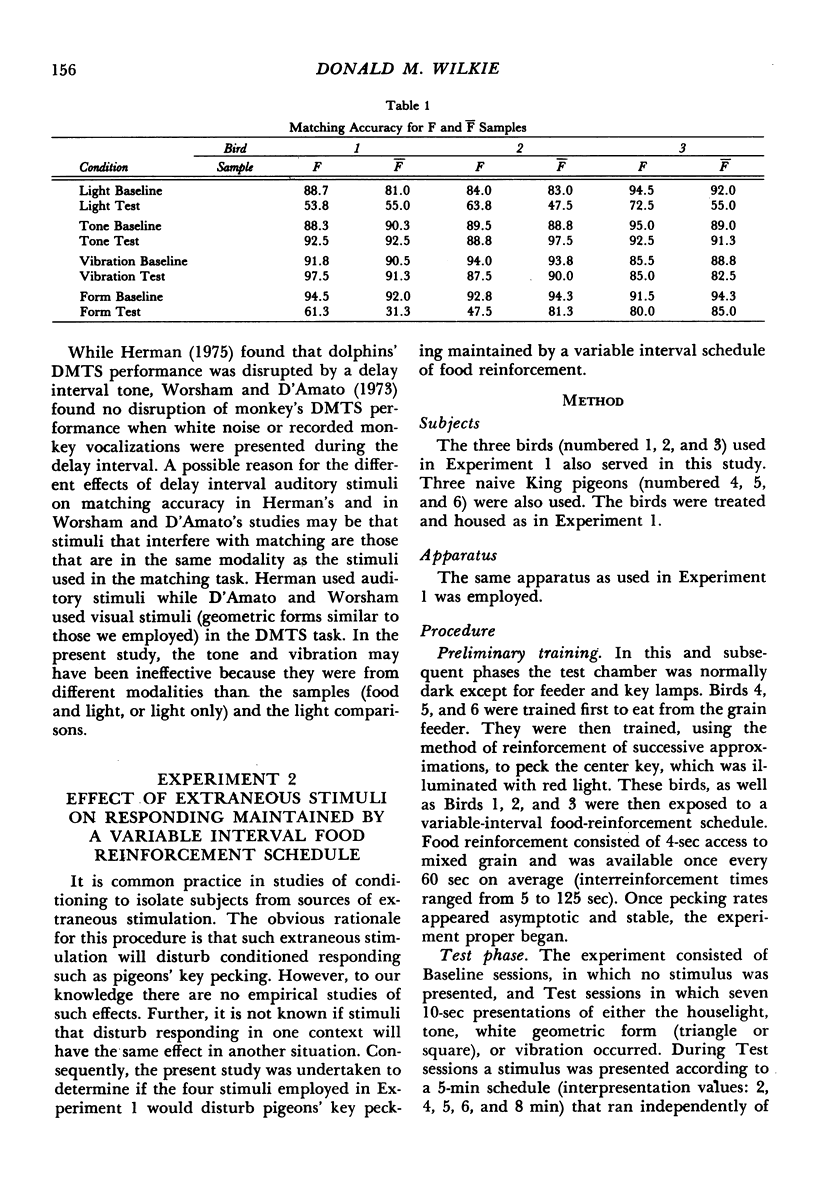
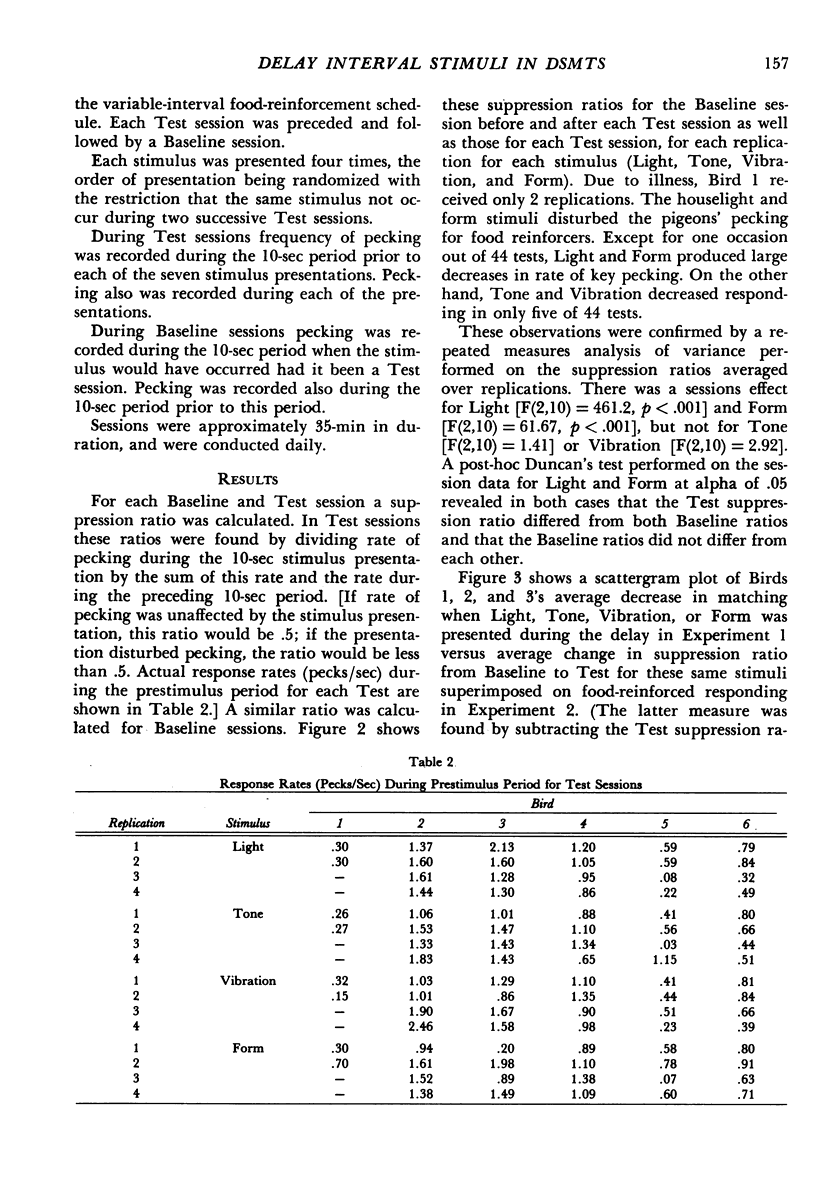
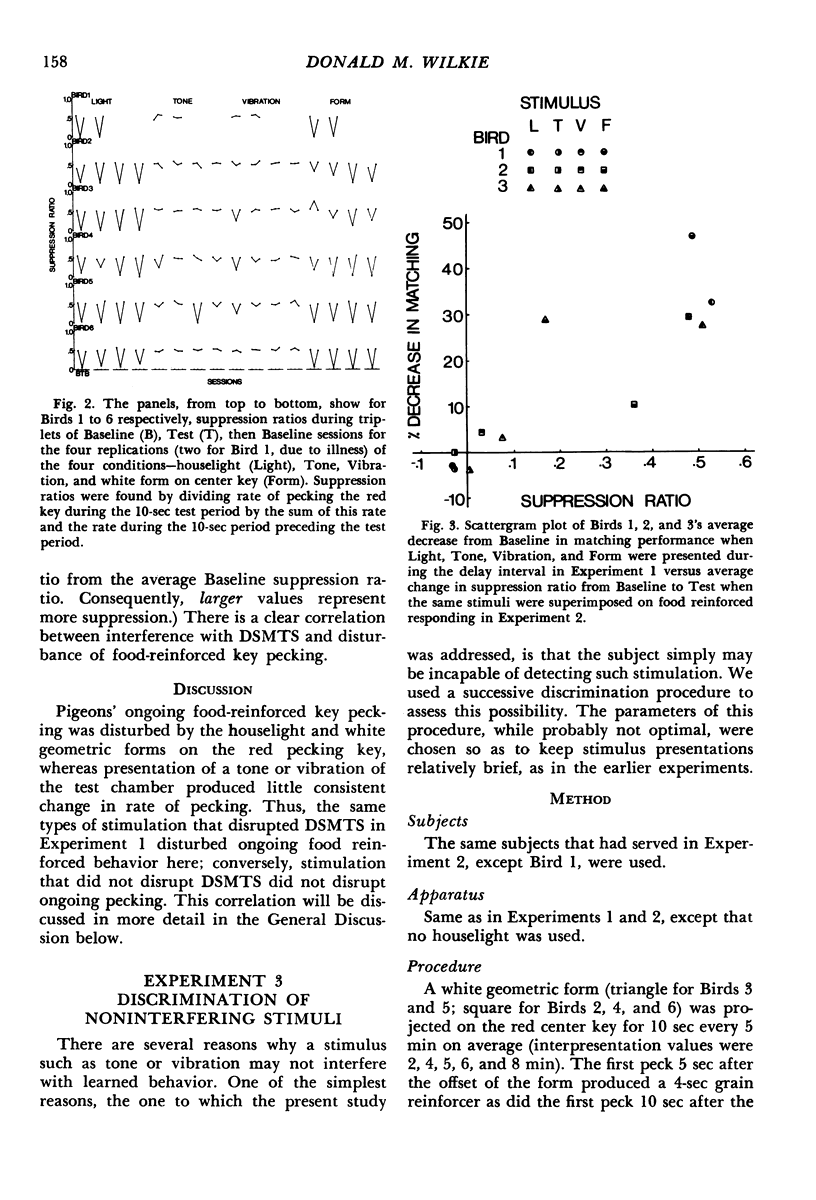
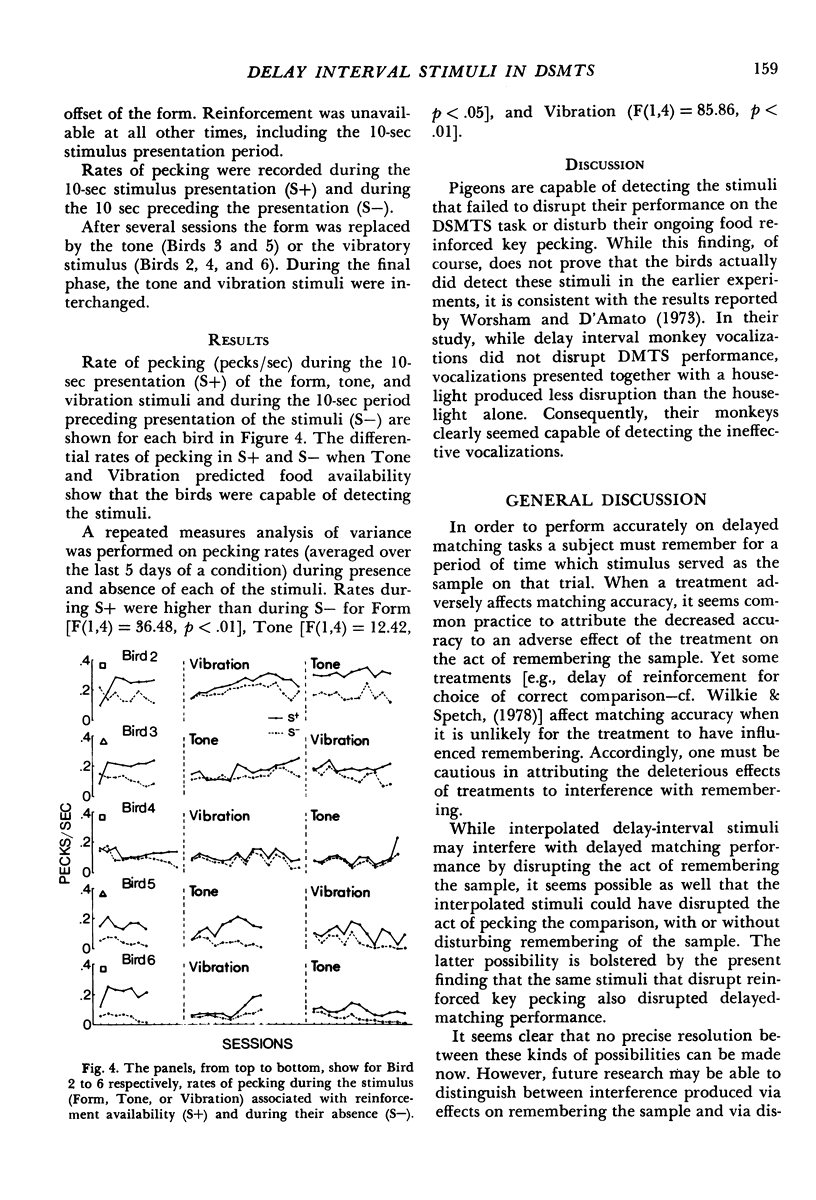
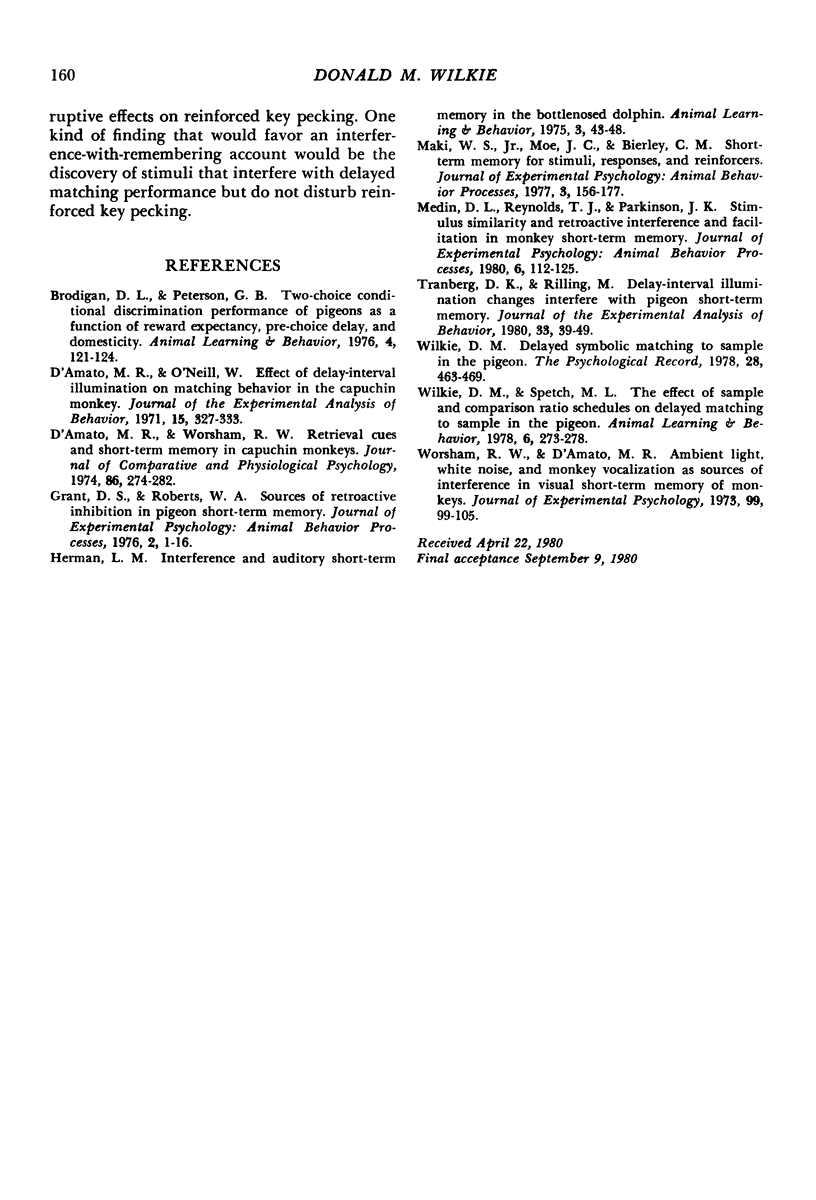
Selected References
These references are in PubMed. This may not be the complete list of references from this article.
- Brodigan D. L., Peterson G. B. Two-choice conditional discrimination performance of pigeons as a function of reward expectancy, prechoice delay, and domesticity. Anim Learn Behav. 1976 May;4(2):121–124. doi: 10.3758/bf03214021. [DOI] [PubMed] [Google Scholar]
- D'Amato M. R., O'neill W. Effect of delay-interval illumination on matching behavior in the capuchin monkey. J Exp Anal Behav. 1971 May;15(3):327–333. doi: 10.1901/jeab.1971.15-327. [DOI] [PMC free article] [PubMed] [Google Scholar]
- Medin D. L., Reynolds T. J., Parkinson J. K. Stimulus similarity and retroactive interference and facilitation in monkey short-term memory. J Exp Psychol Anim Behav Process. 1980 Apr;6(2):112–125. [PubMed] [Google Scholar]
- Tranberg D. K., Rilling M. Delay-interval illumination changes interfere with pigeon short-term memory. J Exp Anal Behav. 1980 Jan;33(1):39–49. doi: 10.1901/jeab.1980.33-39. [DOI] [PMC free article] [PubMed] [Google Scholar]
- Worsham R. W., D'Amato M. R. Ambient light, white noise, and monkey vocalization as sources of interference in visual short-term memory of monkeys. J Exp Psychol. 1973 Jun;99(1):99–105. doi: 10.1037/h0034770. [DOI] [PubMed] [Google Scholar]


